News
Garden Path Trends For 2023
Whether your garden is a small affair or a large, verdant landscape lush with plants and ornamentation, statues, fountains, fish ponds, exotic plants, decking, veggie patches or chook pens, you still need to move from A to B easily and safely. Explore the latest garden path trends for 2023 and find the perfect option for your garden.
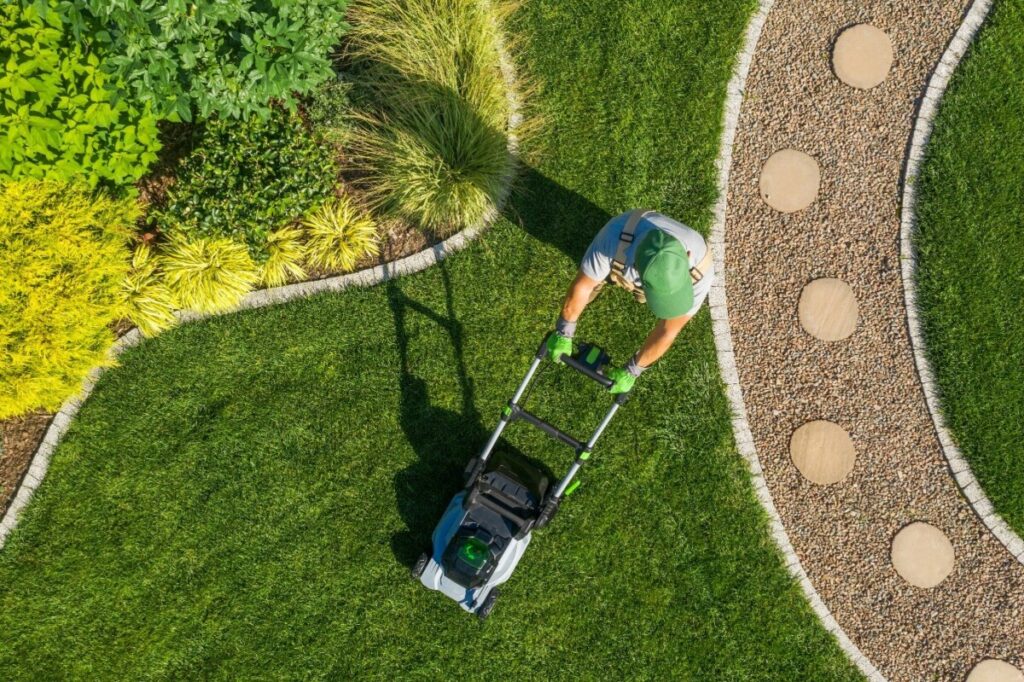
The biggest trend in gardens is all things environmentally friendly. Think of products that are eco-friendly or recycled. People want a garden that is in tune with nature, low maintenance, and a friendly haven for native animal and bird life.
But pathways are not only functional; they can be part of the landscape, providing opportunities to break up your garden into different sections, and they don’t have to lead anywhere in particular.
Paths can meander through your garden, leading your visitors on a journey that explores special highlights and ends up where they started.
Here are some affordable, popular and creative outdoor garden path ideas that are still trending and will remain timeless.
For starters, the cheapest garden path material is gravel or mulch, which can snake easily around your garden with little effort on your part.
But remember, if you live in a part of Australia that experiences snow, you won’t be able to shovel your path without disrupting the gravel or mulch as well.
Mulch

Mulch is the cheapest option and is at home in many different styles of gardens, like native or English.
It is easy to handle and lighter than other materials. One problem is mulch decomposes over time and fades, and if a strong wind doesn’t blow it around, regular traipsing and the wheelbarrow will.
You will have to replace it every 2-5 years. Path edging is necessary to keep the path’s shape and stop the mulch from “escaping”. Also, cockroaches love living in mulch, and weed mat or no weed mat will become a problem.
Gravel
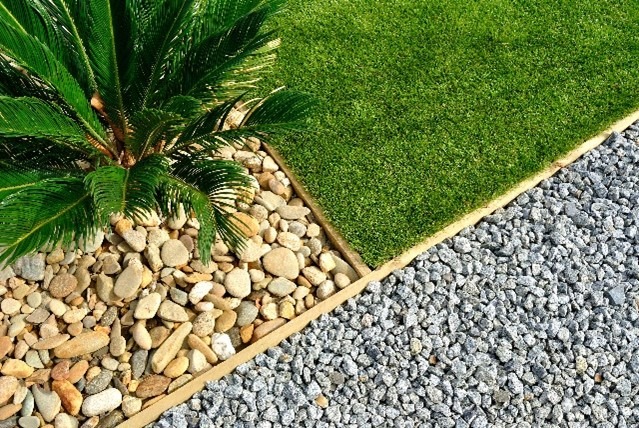
Gravel pathways are popular because they are versatile and suit Australian native and English country garden themes. Common gravel types are pea gravel, crushed gravel, limestone or granite rocks. They tend to move underfoot and under wheelbarrows, and your gravel will be flung out into the garden.
Also, people have been known to slip on pea gravel, which is why many Councils ban it for verges. Some of the smaller pieces also find their way indoors via the sole of your shoe.
You will also have trouble with weeds because weed mat doesn’t last forever, and Australian weeds are clever in finding ways to break through. So, as much as we’d like to say gravel is low maintenance, that would be a fib.
Edging ideas
Timber
Timber looks at home in a variety of garden themes. After all, it’s part of nature. Even thick sleepers look amazing, especially in rustic garden settings. Some people use sleepers for garden pathways and intersperse them with gravel or smooth river rocks.
This looks effective but is not the easiest to walk on. There is still the slip factor to consider with slippery wet rocks that move underfoot and fling themselves sideways into the garden.
You can use other timber decking forms that suit many different garden themes, making it an incredibly flexible option. A great idea for the environmentally conscious is using recycled timbers from old sheds, pallets, or ripped-up decks.
Timber pathways, whether stained or allowed to age naturally, unlike many man-made materials, i.e. bricks, look natural because it is. It is unobtrusive and does not detract or distract from the surrounding landscape.
However, natural timber fades and needs regular maintenance to keep it looking good and stop it from warping, splintering, nails popping up, and termites (depending on the type of timber). We couldn’t describe it as low maintenance.
Composite timber
However, a realistic timber-look path that does not fade, warp, splinter, pop nails, or appeal to termites is possible… because of composites like NewTechWood. It looks like the real thing without any of the hassles of the real thing. Imagine a winding timber-look path with deck lights!
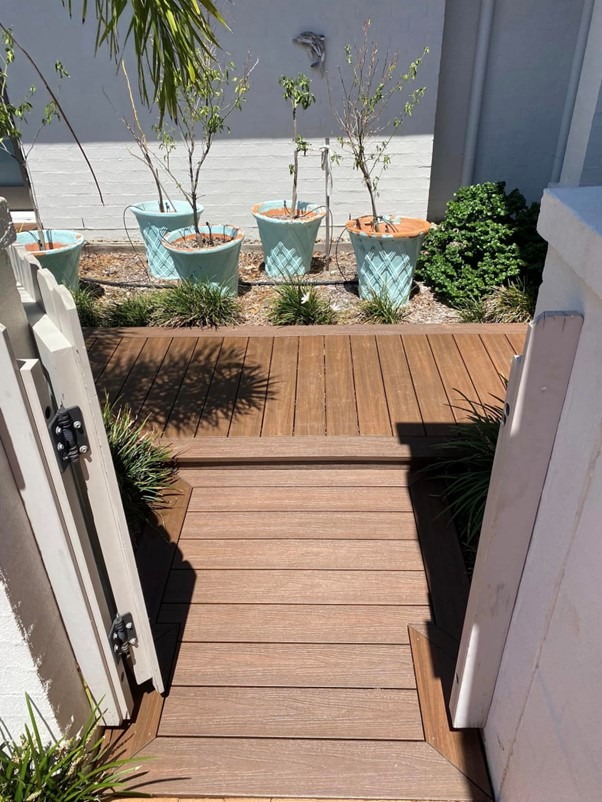
(Image source: NewTechWood US49 Ipe by Bayside Outdoor, QLD)
Having decided on mulch or gravel, you only need to edge it for completion. This will not only define the path but will act as a border to separate the garden from the path and help keep gravel and mulch in place.
At the cheapest end is plastic landscape edging. It’s light and easy to install, and if you don’t like its plastic look, you can camouflage it with a border of plants.
You can also use recycled bricks or stones as a path border. These look effective and don’t need camouflaging. They are long-lasting but cost more and require more effort to install. You can consider cheaper concrete edging; these days, some of them are designed to resemble rocks – a cheaper alternative to the real thing.
Then we have steel/metal edging, which again provides a clean border finish but is more expensive to buy.
Finally, you can consider timber log borders. Cheaper timbers can be more affordable than some of the other options and are perfect for when you need to install steps in sloping areas.
Brick, Cement, and Stone Pavers
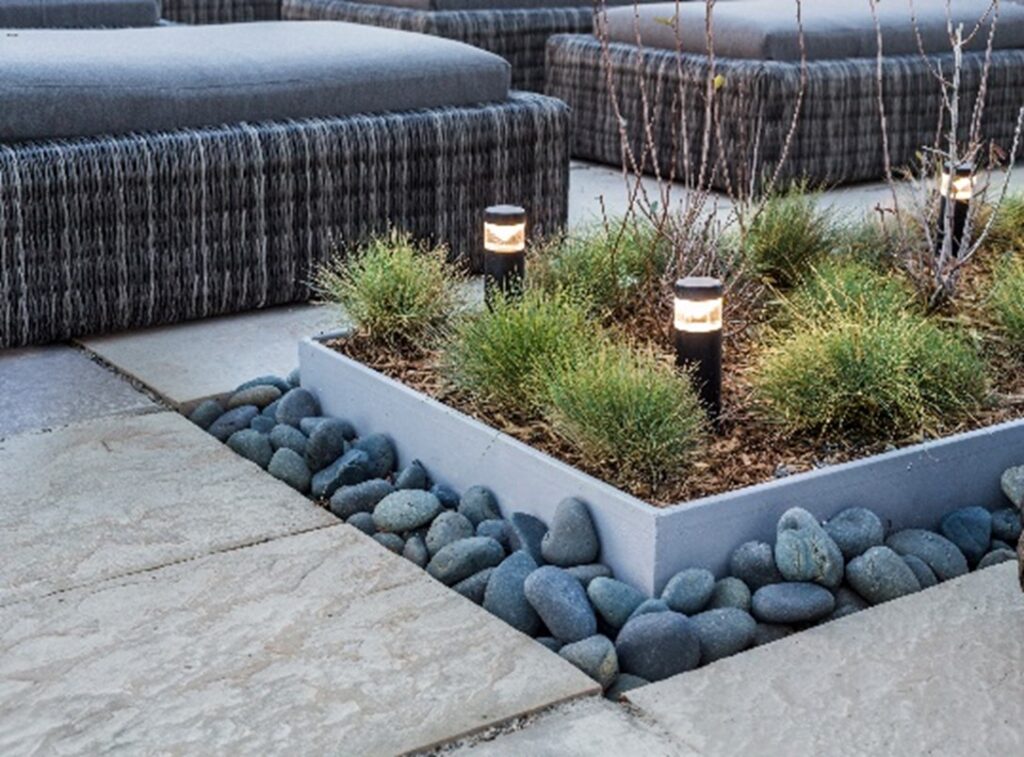
These cost more, but they require less maintenance than mulch and gravel. Styling options are plentiful both in individual colour and shape as well as path design possibilities. Options range from simple concrete slabs and recycled pavers to funky metal blocks for an industrial feel.
Pavers are hard wearing, but depending on the surface finish, they may or may not be slippery when wet. But this option is affordable if you don’t mind dealing with weeds.
To avoid weeds, consider pavement-look stamped concrete, which is available in a variety of colours. These can also be slippery when wet, and over the years, the colour will fade, and the grey cement will become visible in areas of heavy traffic. On the plus side, we haven’t met a weed yet that can grow through concrete.
Stepping-stones
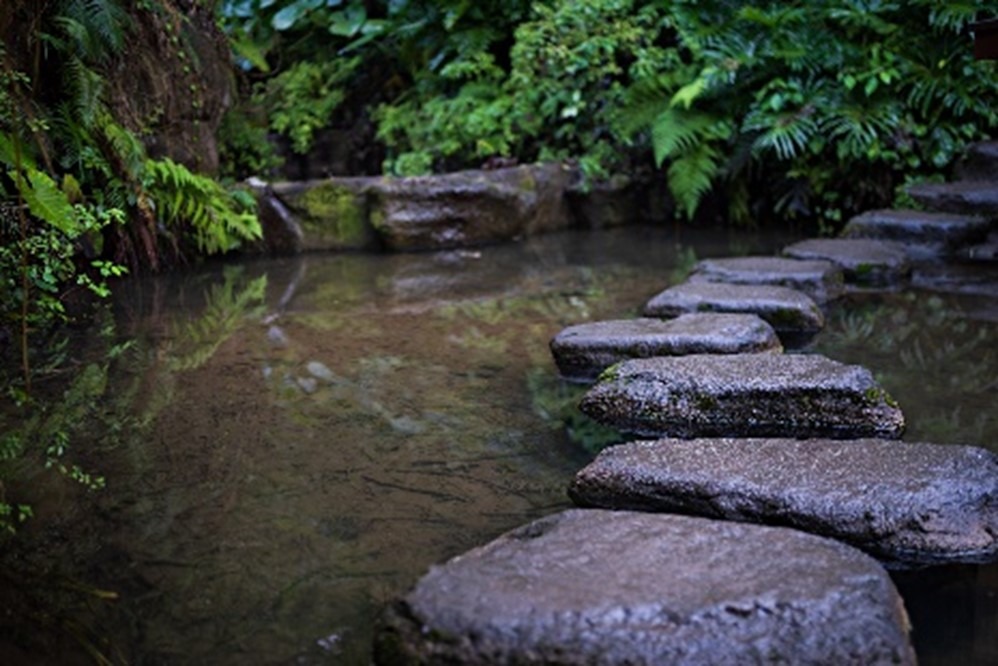
Stepping stones are a quick and easy way to establish a pathway. These won’t blow away in a strong wind and are unlikely to move underfoot, but they won’t be as wheel-barrow friendly as other options. Stepping stones can cost less than other paving options because you don’t place them close together, a little goes a long way. Colours and patterns suit most tastes and budgets, from plain concrete slabs to those designed to look like sliced logs.
What Garden Path Trends For 2023 Do You Like the Most?
If you are a landscaper or designer, contact our team to discuss the possibilities and organize samples, and remember, NewTechWood resellers also carry samples, as do the recommended installers.